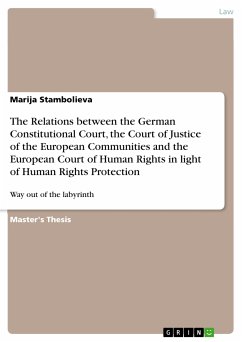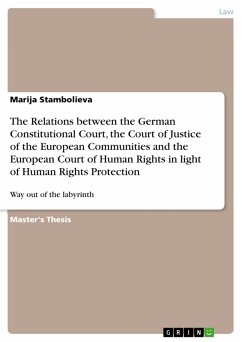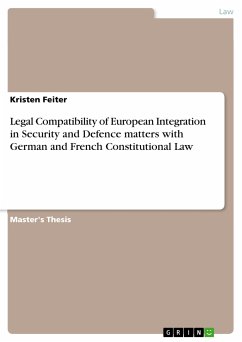Master's Thesis from the year 2006 in the subject Law - European and International Law, Intellectual Properties, grade: 1 , University of Hamburg (Europa Kolleg Hamburg), language: English, abstract: The purpose of this paper is to examine the various interactions among the various courts, the different levels of interaction and the implications to the individual. [...] The modern system or systems of protection of human rights in Europe have been developing together with, as well as within the processes of European integration. These processes started on an intergovernmental level, by the founding of the Council of Europe in 1949, after the end of the Second World War, with the main intention to prevent future devastations and severe violations of human rights in Europe. In 1950 the Member States of the Council of Europe committed to respecting the rights and values expressed in the European Convention on Human Rights (in further text ECHR). The implementation and continuous respect of the ECHR is monitored by the European Court of Human Rights (in further text ECourtHR), according to the criteria set forth by international law. Parallel to that process, another one, mainly in the field of economic integration, was marked by the establishment of the European Coal and Steel Community in 1952, the European Atomic Energy Community and the European Economic Community in 1957 (in further text the European Community/Communities or EC). By “limitation of sovereignty or a transfer of powers from the states to the community”, a new “legal system” was created, which “by contrast with ordinary international treaties (…) on the entry into force of the treaty, became an integral part of the legal systems of the member states”1. Thus, in the frameworks of its role as gatekeeper of Community law, the European Court of Justice (in further text ECJ) confirmed the creation of a new sui generis organization. [...] 1 ECJ, Case C-6/64, Costa/E.N.E.L., [1964], I-00585, point 3.
Bitte wählen Sie Ihr Anliegen aus.
Rechnungen
Retourenschein anfordern
Bestellstatus
Storno









